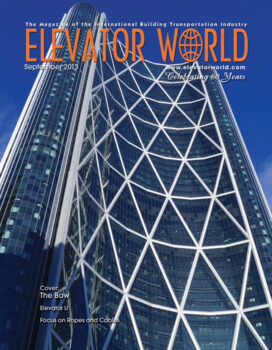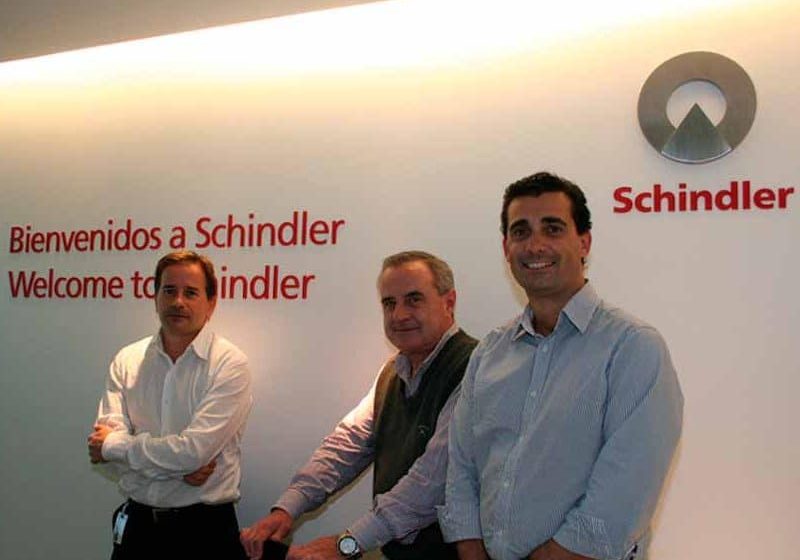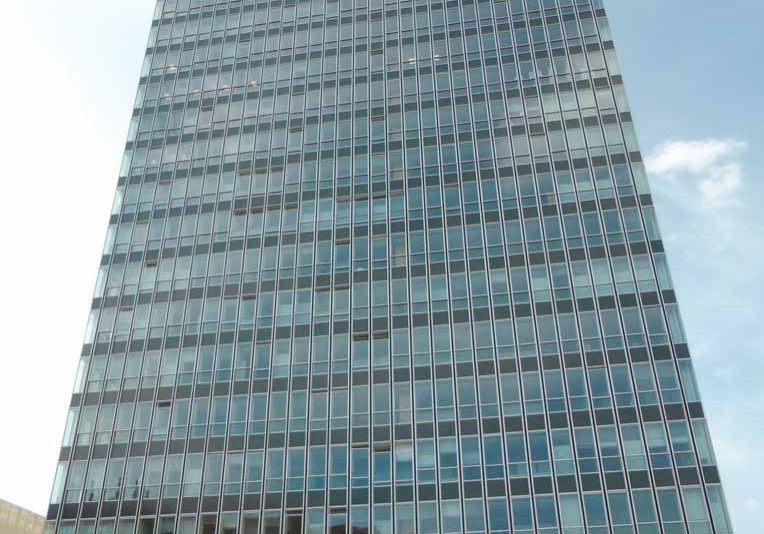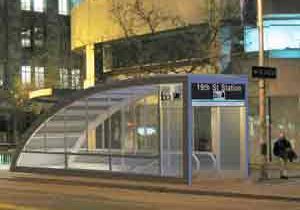Lift Expo Russia 2013
Sep 1, 2013

The sixth Lift Expo Russia saw growth at its location in Moscow, which now sprawls 10,000 m2.
photos by Anna Khristich
The sixth Lift Expo Russia was held in Moscow on June 6-8 at the International Exhibition Complex All-Russia Exhibition Centre. Approximately 5,500 people from 198 companies and 18 countries attended the event, which was an increase from the 2011 event. The exhibition area was also increased, from 7,000 m2 to 10,000 m2. The surge in interest can be attributed to excellent organization and the intensification of the Russian elevator industry.
Exhibition organizers included AK Lift JSC, National Lift Union, AIAE (National League), All-Russia Exhibition Centre and International Exhibition Center MosExpo. They created a well-organized event, which was prepared far in advance. The registration process being launched in October 2012 helped attendees prepare, as well. Organizers were able to create an electronic catalog of companies, including contact information, descriptions of activity types and information about data placement in the thematic lists, all of which was accessible to participants via the Internet. Interactive Service “Match Making” on the exhibition website allowed visitors and exhibitors to simplify the process of getting to know each other beforehand, enabling them to schedule meetings and navigate the exposition plan via an application for mobile devices. However, the main component of the exhibition’s success was the state of the Russian elevator market, which has been substantially transformed in the last two years since Lift Expo Russia 2011.
The elevator market is closely related to the real-estate market. More than 25% of the Russian elevator market’s growth in 2005-2008 was caused by a favorable real-estate market. During the global recession, the elevator market declined due to reduced construction of residential and nonresidential buildings, but the market reached its pre-crisis level in mid 2011. Experts predict that in the next few years, the elevator market will show a positive trend reaching the level of 40,000 units per year by 2013. The replacement of existing, worn-out equipment will contribute to the growth of the market, because more than 150,000 elevators have exhausted their 25-year lifecycles.
The main elevator suppliers for the Russian market (more than 70%) are the Scherbinka lift manufacturing plant, Karacharovo mechanical factory (KMZ) and Mogilevliftmash works (Belorussia). International manufacturers are represented mainly by Otis and KONE. The share of imported elevator equipment in the country as a whole is about 15%; however, due to the geographical location of the Siberian and Far Eastern federal districts, the share of imported products (mainly from China) is more than 25%.
The escalator market is showing steady growth and currently stands at about 1,300 escalators and passenger conveyors per year. In the “machines for retail” segment, the share of imported machines for retail spaces is more than 90%. LATRES, the only Russian escalator manufacturer for this segment, produces about 80 units per year. The escalators for subways are traditionally supplied by domestic producers, such as ELES, Universalmash, EC-Service and Kriukov Car Building Works (Ukraine).
Another growing sector in Russia is that of lifts for disabled passengers. According to the Russian Federation Ministry of Labor and Social Protection, there are approximately 12.9 million people with disabilities in Russia. The country has been implementing the “Accessible Environment” government program. One of its goals is to create an environment of unimpeded access for disabled people to the most important facilities and services in various areas. In Moscow, there are approximately 50,000 public buildings that must be adapted for the disabled by 2016. Furthermore, these devices are increasingly installed in residences. This has led to increased demand for devices with dispatching systems and visual control, as well as special equipment for people with disabilities (elevators, platform lifts, mobile devices for stairs, etc.).
An important factor in improving connections between Russian and international representatives of the elevator industry is bringing the Russian elevator standards into compliance with international norms. Work to this end has been conducted by Technical Committee for Standardization 209 “Lifts, escalators, passenger conveyors and lifting platforms for persons with disabilities” in recent years. At the beginning of this year, two technical regulations, “On the safety of elevators” and “On the safety of machinery and equipment,” came into force. The state standards for elevators, escalators, passenger conveyors and lifting platforms for persons with disabilities corresponding to these technical regulations and harmonized with the relevant European standards have either been adopted or are in the process of being approved by ROSSTANDART.
Thematically, the exhibition included the following sections:
- Major suppliers of spare parts and equipment
- Elevators
- Escalators and moving walks
- Lifting equipment for persons with disabilities
- Mechanized parking systems
- Parts and components for elevators and hoisting gears
- Dispatching systems
- Management and control systems for elevators and equipment
- Materials, design options and tools for elevators
- Components for production, installation and service of hoisting gears
- Certification, training and retraining of specialists
The leading elevator companies reserved space for their stands along the center aisle of the exposition. The Wittur MCS1 modular elevator car met visitors at the entrance of the exhibition hall. “Wellmaks” and “Proton,” new business-class elevator lines that meet European requirements, were presented by leading Russian elevator manufacturers Scherbinsky lift manufacturing plant and KMZ. The focus of KMZ’s exposition was a 7-m-long elevator shaft with a working Proton model. Attention was also directed to displayed gearless winches and an elevator control device (KMZ-UKL) with the function for the emergency evacuation of passengers.
MEL elevator factory presented a new business-class elevator, “Wilkma,” and a control station, “Biryusa,” which controls an elevator operation via satellite and delivers stranded passengers to the nearest floor in an emergency stop.
Another host invited visitors to look at Moslift’s new developments, including energy-efficient elevators, platform lifts for the disabled, systems for supervisory control over the operation of elevators and elevator parts.
In contrast to Russian elevator companies, foreign exhibitors focused on simpler and more-affordable products. For example, ThyssenKrupp Elevator has developed “Simplicity” for installation into typical elevator shafts of residential buildings. Such an elevator costs EUR20,000 (US$26,222).
The share of imports of elevator equipment in the Russian market has been increasing by 2-3% every year, mainly due to Chinese companies. Forty Chinese companies were represented at the exhibition by Zhang Lexiang, chairman of the China Elevator Association.
Director of International Exhibition Center MosExpo Andrew Belyankin presented awards in seven categories and noted that the commission had difficulty choosing the best, because many companies deserved awards. Awards were given to Italian Top Gears for the best foreign stand, Ungertelevator for the best stand design and Liftpress for active participation and promotion of the exhibition.
The business program “Forum of workers of the elevator industry, utilities and construction” took place on the eve of the official opening of the exhibition. Other conferences were held during the exhibition and covered a variety of topics. A presentation on promoting the elevator market in Russia was given, as well as a presentation of companies belonging to the European associations European Lift Component Association and ANICA (Italian elevator components association). In addition, university students within the elevator industry presented their thesis projects, and a workshop about entering the profession of technical elevator maintenance was held.
As stated by the participants and guests, the main goal of the exhibition was to communicate with colleagues, strengthen old relationships and build new ones, while facilitating constructive dialogue to increase cooperation.
Get more of Elevator World. Sign up for our free e-newsletter.









